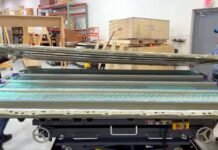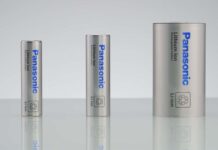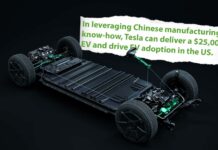[ad_1]

Most batteries powering today’s electric vehicles are made from subcategories of lithium-ion, with chemistries like nickel-manganese-cobalt (NMC), nickel-cobalt-aluminum (NCA), and lithium-iron-phosphate (LFP), among others. But if you’ve been plugged into battery developments this past week, you might be aware that an alternative seems to be gaining traction (again after initial reports in 2022). And that’s sodium-ion.
A study published in the U.S. government’s National Library of Medicine has labeled sodium-ion as a “rising star.” On the other side of the globe, it is even closer to commercialization. BYD is constructing a dedicated sodium-ion battery plant in eastern China with a reported investment of $1.4 billion and an annual capacity of 30 gigawatt-hours. Last month, Sweden’s Northvolt claimed to have made a breakthrough, by developing a sodium-ion battery for energy storage with a density of 160 watt-hours per kilogram, matching some LFP batteries.
With all this attention and promise, could it really be a viable alternative, or is it just another innovation that might fade into obscurity?
For starters, sodium is said to be abundant across the globe and is found in rock salts and brines. One study published in ScienceDirect mentions that precursor materials for sodium-ion are especially abundant here in the U.S. And its role in batteries is similar to lithium-ion, where charge-carrying sodium ions travel from the cathode (positive electrode) into the anode (negative electrode) and vice versa, during the charge and discharge cycles.
Studies have shown that sodium-ion batteries could eliminate the pesky traits of lithium-ion that we detest: there’s no risk of thermal runaway, it can operate at varied temperatures, and crucially, the per ton cost of sodium hydroxide, a key raw material, is far lower than lithium-hydroxide. But the equation isn’t as straightforward as it seems, Bloomberg New Energy Foundation’s senior energy storage expert Evelina Stoikou told me in an interview.
“Sodium-ion made news when lithium prices were very high, right after the Covid-19 supply chain disruptions and the war in Ukraine impacting nickel. The circumstances were quite right for more momentum to pick up,” said Stoikou. That’s true, because lithium-ion battery pack prices increased in 2022, after having consistently fallen for several years consecutively. But things have changed since; lithium-ion battery prices are now at a record low, and they’re expected to fall under $100/kWh by 2027, according to BNEF.
“Sodium-ion generally competes with LFP. Both have lower energy density compared to nickel-based chemistries,” said Stoikou. “As a result, it makes sodium more suitable for applications that don’t have very high energy requirements,” she added. Since the energy density is low, it seems like sodium-ion batteries could play a larger role in stationary storage and smaller vehicles where range requirements are lower. That’s exactly what BYD appears to be doing—the batteries from its upcoming sodium plant will go into “microcars,” the press release mentioned.
The U.S. government, major battery manufacturers, and carmakers are putting all their financial muscle behind localized lithium-ion battery production, and that can cast a shadow over this potential LFP competitor. “What’s going to make or break the technology? One of the key factors is cost competitiveness. If lithium prices continue to drop drastically, and LFP becomes cheaper and cheaper, then that is going to make the case for sodium-ion harder,” said Stoikou.
Even companies that have reached the later stage of commercialization with sodium-ion, like BYD and Northvolt, are not going to exactly compete with lithium-ion which is a more mature product, Stoikou said. And then it also boils down to the nature of driving in the West. “The U.S. and Europe have different consumer preferences [than China]. People drive longer distances here and they have bigger cars. So it’s not necessarily a perfect fit,” she added.
Instead, Stoikou affirmed that advancements in lithium-ion and its subcategories would likely continue being the status quo for years to come. And that would include advancements in technology at the cell and pack level, advancements in cathode and anode—like incorporating silicon into graphite or even solid-state electrolytes. So, while sodium-ion technology might find its niche in energy storage and microcars, its broader prospects seem rather constrained, at least for the time being.
[ad_2]
Source link













